"An animated puppet film. It shows children dreaming and then the puppets start to dance. A very short film but delightful for all ages" PSA Journal, Nov. 1956, 22.
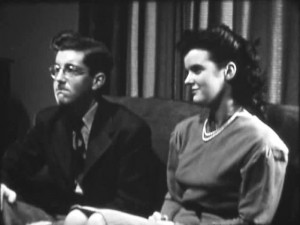
At home in the evening, a sophisticated young woman entertains an awkward male friend of her brother. They make small talk and dance to records -- but the boy's social anxiety overwhelms him, and he disappears in a puff of her cigarette smoke. (D.J. Duffy)
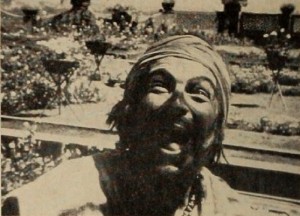
"J. N. Unwalla has chosen a simple morality tale for the theme of this colorful film from India. A beggar pleads for alms from passersby with poor success. There appears suddenly a figure who promises him wealth if he will eschew avarice and greed. As a shower of golden coins overflows his lap, however, he begs for "one dinar more." The point of the tale is proved when this evidence of his greed causes the wealth and the figure to disappear. Although employing interesting camera viewpoints to give diversity, the single setting in a Bombay courtyard suggests a stage play rather than a motion picture." Movie Makers, Dec. 1949, 470.
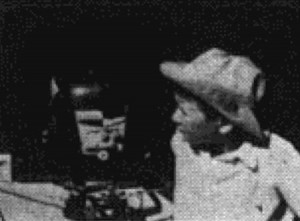
"When one lives near the inland water, a boat is a necessity for a visit to the store. While Father is shopping, the young son takes a boat on an exploration in the land of monkeys, birds, alligators, zebras camels, giraffes, and other exciting game. Although he has a gun, his shooting is done with camera. An adventure that could be enjoyed by any boy. His return to the wharf is timed with the return of his Father and homeward bound, surrounded by the dense jungle" PSA Journal, Oct. 1962, 36.
"An archaeologist on an excavation finds a glass cube that allows him to see into the past where he sees an Egyptian Princess standing in a garden." Sacramento Public Library.
"The rose, a young girl, so proper, and so elegant in her royal dress, jewelry and jeweled crown. The weed, also a lovely girl, simply dressed and scorned by the rose. By scissors the rose is cut and its petals picked away to the delight of the weed, but then a gloved hand pulls the weed and leaves it to die in the sun. Can it be that some do not like weeds?" PSA Journal, Nov. 1960, 42.
The Totem Group was a club within the Victoria Amateur Movie Club -- a sub-group of 16 mm users that banded together to produce their own film, The Princess and the Frog "... a nine-minute, black-and-white, sound-striped fiction story written by member Walter George." (Sharcott)

"Three Wishes is a fantasy, done by Earl L. Cochran with a delightful touch of originality. The story is told in footage that is relatively brief, yet clever editing and planning make it thoroughly complete. Here we have the familiar legend of the fortunate mortal who is given exactly three wishes by a supernatural power — and what happens when these three wishes are granted. The feat that Mr. Cochran accomplished was to tell such a story humorously and effectively, but without resort to complicated camera trickery. Except for one double exposed scene of the inevitable jinni which is evoked by rubbing a silver teapot (and this is a very good shot, too!) the film tells its story with straight cinematography. While the interior and exterior technique of scene recording, including a shot of an auction, was completely adequate, the outstanding feature of this film is its story telling quality, accomplished by careful cutting. An excellent performance was given by the single lead character of the photoplay, while the brief appearance of the jinni was very expertly handled." Movie Makers, Dec. 1940, 600.
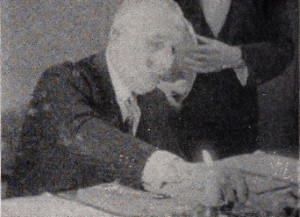
"When a preaching film turns out to be entertaining, the advice it offers is more likely to be remembered and heeded. In Time To Consider, a film that advocates bicycle safety, the Fourfold Film Society dramatized its subject with delightful imagination and refreshing use of the black and white medium. A pompous gentleman, after being splashed by a bus on the way to his club, vents his ire by "writing to the Times." A messenger takes the envelope, which is addressed simply Time," and starts off on his bicycle, only to be run over in traffic. The film then switches to fantasy, as the messenger, dressed now in white livery, delivers the letter to Father Time's heavenly establishment. Father Time, peering at a celestial television screen, observes the various traffic mistakes that mortals make and, between sequences showing unwise behavior, he dictates the rules of proper procedure. The production's few scenes of uneven exposure are more than made up for by its rich imagination, excellent cutting and refreshing camera treatment." Movie Makers, Dec. 1948, 495-496.
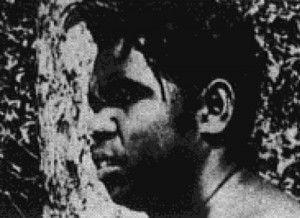
"Under the Kurrajong tells the story of a professional man who takes a day off to enjoy his favorite avocation, painting, in the nearby woods. Deep in the forest be stumbles upon an old grave and from the inscription he imagines the action that might have taken place more than a half century before" PSA Journal, Sept. 1966, 34.
Total Pages: 5